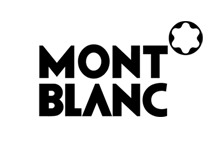Montblanc
Montblanc is a German manufacturer of writing instruments, watches, jewellery and leather goods, often identified by their "White Star" logo. Founded by the stationer Claus-Johannes Voss, the bank...
Montblanc is a German manufacturer of writing instruments, watches, jewellery and leather goods, often identified by their "White Star" logo. Founded by the stationer Claus-Johannes Voss, the banker Alfred Nehemias and the engineer August Eberstein in 1908, the company began as the Simplo Filler Pen company producing up-market pens in the Schanzen district of Hamburg. Their first model was the Rouge et Noir in 1909 followed in 1910 by the pen that was later to give the company its new name, Montblanc. The Meisterstück name (English: "Masterpiece", the name used for export) was used for the first time in 1924, for the top lines of fountain pens. Today, the Montblanc brand is on other goods besides pens, including watches, jewellery, fragrances, leather goods and eyewear. The company was acquired by Dunhill in 1977, following which lower price pens were dropped and the brand was used on a wide range of luxury goods other than pens.[1] Today Montblanc forms part of the Richemont group. Its sister companies include luxury brands Cartier, Van Cleef & Arpels, Chloé, and Baume et Mercier. Montblanc is owned, through Richemont, by the South African Rupert Family.Brand Details
Founder
August Eberstein
Brand Strategy
Market segment
Luxury
Core business
Accessories
Targets
Men, Women
Montblanc Latest News
Xin Zhilei Joins Montblanc
Montblanc with April Moon Retail (AMRPL)
Montblanc offers Ramadan-special Menu
Montblanc's New Limited Edition 1858 Geosphere
Montblanc Financial Report 2024
Last fiscal year ended on March 31, 2022




